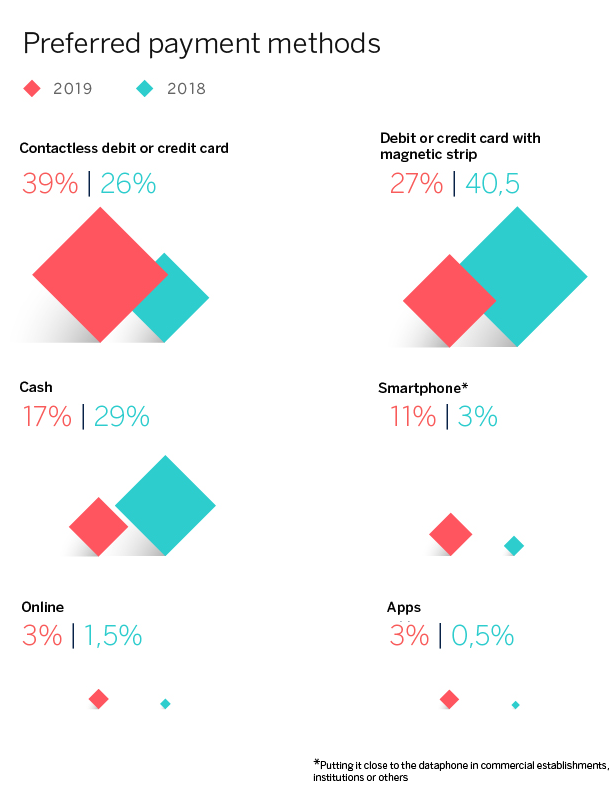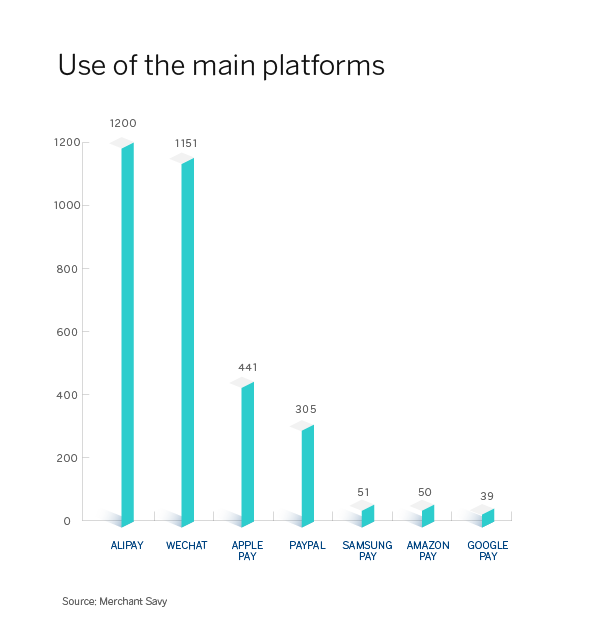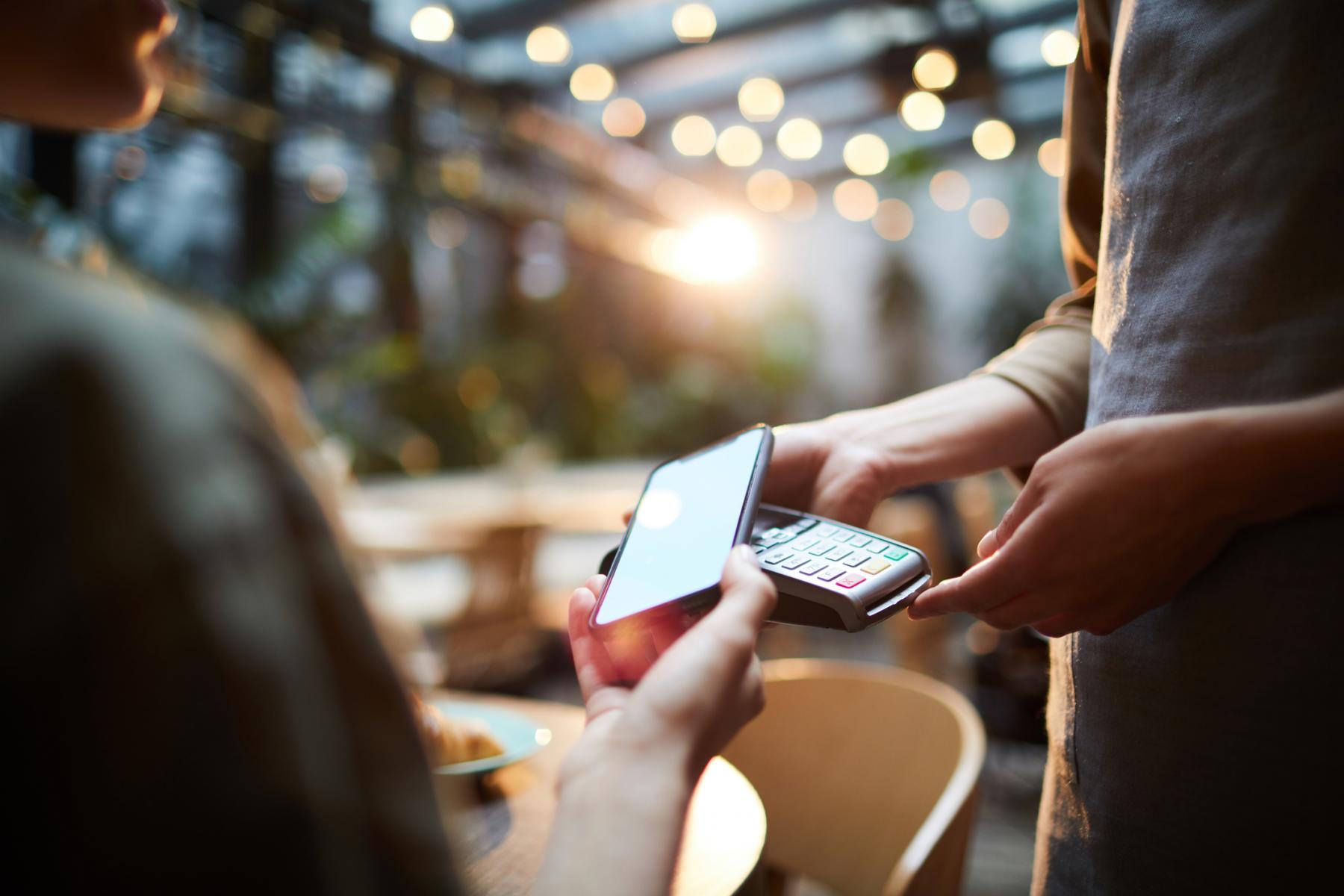The mass use of smartphones and other mobile devices, coupled with the outstanding growth of e-commerce, has displaced cash as the preferred means of payment (increasingly more residual).
The figures speak for themselves. In Spain, the use of mobile payment apps grew by 30% in the second quarter of 2019, according to the Estudio General Mobile, conducted by Smartme Analytics. This upward trend is expected to continue in the coming years, hand in hand with the limitation of cash and the consolidation of smartphones as the main means of payment.
Alternative to cash and cards
Mobile payments have become one of the substitutes for bank cards and cash. According to the Consumer Insights Survey 2018, by PwC, about 14% of Spaniards already used their cell phone to make payments at least once a month, twice as many as the previous year. This is slightly below the global average, which is 17%.
In the particular case of e-commerce, credit and debit cards continue to be the preferred means of online payment in Spain, as they are used for 43% of transactions, compared to 27.7% for some digital wallets, such as Apple Pay or Google Pay, according to Morgan JP’s 2019 Global Payments Trends Report. However, the latter are expected to become the main means of payment in 2021.
In addition, when it comes to payments in physical merchants, mobile payment is beginning to take on an important position. In fact, according to 66.5% of users, this payment method will grow greatly (38.5%) or a lot (28%) for the next one or two years, according to Mastercard’s Cashless Cities Index..
Third payment option in Spain
Although the majority of respondents in Mastercard’s survey think that mobile payments are their preferred option, it is only the third most widely used option, behind cash payment and conventional credit/debit cards. In fact, only 11% of consumers used this method in 2019 on a regular basis, compared to 66% who used credit cards (contactless or magnetic stripe), and 17% who used cash.

This may be explained by two main factors, as described in the study:
- Respondents believe that cash is the most accepted option in their day-to-day life, since 77% consider that it is always accepted.
- In addition, there is still some lack of information about the available forms of payment, as recognized by 41% of respondents. This means that many people are still be unaware of the mobile payment services, which are much more convenient and secure than traditional services.
The revolution of mobile payment platforms in Spain
Mobile payment platforms are expected to consolidate their position as the main means of payment in physical and online retailers in the coming years. The world’s leading governments continue to limit or even remove the possibility of paying with cash, especially to fight fraud and thus keep track of all transactions that occur on a day-to-day basis. And that’s a real boost for mobile payment platforms.
Nobody wants to miss this train. Payment solutions offered by technology firms such as Apple, Google, Amazon or Samsung and platforms like Bizum already coexist in the market, and are available through BBVA cards. And we must not forget the options that will predictably be offered by instant messaging applications in the near future, such as WhatsApp or Telegram.
In the Spanish market, PayPal continues to be the most widely used digital wallet, as 20% of all payments made in e-commerce use this medium, according to data from the JP Morgan report. However, there has been increasing competition since other platforms were introduced in 2016 (e.g. Google Pay, Apple Pay and Amazon Pay).
All without forgetting other Spanish solutions that have revolutionized the payments industry. This is the case of Bizum, an application created in 2016 by a consortium of Spanish banks, including BBVA, which allows instant payments between individual checking accounts.
In 2019, Bizum reached six million users, with a 250% growth over the previous year. In addition, in November, the application introduced a new functionality for payments in e-commerce, which allows users to make online purchases at retail websites that have incorporated the Bizum button as a payment method.
In total, according to the Spain Mobile Wallet and Payment Market Analysis & Opportunities report, the mobile payments industry in Spain will grow to almost USD 172 billion by 2025, with a compound annual growth rate of 20.1% in the period 2018-2025. In other words, the use of mobile payment platforms is expected to grow by 332% in this time period.
Leading global platforms
Globally, Chinese payment platforms continue to lead the industry in this sector. According to data collected by Merchant Savy, Alipay is currently the most commonly used payment app in the world, with more than 1.2 billion users. It is closely followed by WeChat (about 1.151 billion users), with Apple Pay (441 million users) in a very distant third place.

The growth of all these platforms has been equally spectacular in recent years. For example, Apple Pay, the most widely used platform in Spain, has multiplied its users worldwide more than five times in just four years, going from 67 million in 2016 to 441 million users in 2019. And they already account for 5% of total payments globally, a trend that could double over the next five years.
The cryptocurrency alternative
We couldn’t finish this review without talking about cryptocurrencies, and more specifically, Bitcoin. More and more retailers accept them as a means of payment, and more and more users are choosing them to carry out their transactions.
In fact, according to the BitInfoCharts portal, 232,000 transactions are carried out worldwide every day using Bitcoin as a means of exchange, about three transactions per second. To this amount we must add the transactions made with the rest of the 2,351 cryptocurrencies that currently available in the market.
And all thanks to the very nature of blockchain, a technology that preserves the anonymity of users and, at the same time, allows them to carry out any economic transactions, instantly and anywhere in the world.
Mobile deposit and payment platforms through cryptocurrencies follow in their wake. Some of them, such as BitPay, Coinbase and GoCoin, will continue to grow as Bitcoin and other cryptocurrencies continue to be accepted as means of exchange.
In general, all these applications have become the currency of the 21st century on their own merits. And they are expected to continue to grow significantly in the near future.




























